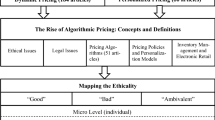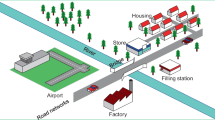Abstract
The rollout of smart meters has enabled the provision of dynamic pricing to residential customers. However, doubts remain whether households can respond to time-varying price signals and that is preventing the full-scale rollout of dynamic pricing and the attainment of economic efficiency. Experiments are being conducted to test price responsiveness. We analyze data from a pilot in Michigan which featured two dynamic pricing rates and an enabling technology. Unlike most other pilots, it also included a group of “information only” customers who were provided information on time-varying prices but billed on standard rates. Similarly, unlike most other pilots, it also included two control groups, one of whom knew they were in the pilot and one of whom did not. This was designed to test for the presence of a Hawthorne effect. Consistent with the large body of experimental literature, we find that customers, including low-income participants, do respond to dynamic pricing. We also find that the response to critical peak pricing rates is similar to the response to peak time rebates, consistent with the finding of one prior experiment but inconsistent with the finding of two prior experiments. We also find that the “information only” customers respond to the provision of pricing information but at a substantially lower rate than the customers on dynamic pricing. We find that the response to enabling technology is muted. We do not find any evidence to suggest that a Hawthorne effect existed in this experiment.

Similar content being viewed by others
Notes
For a survey, see Crew et al. (1995). A case for dynamic (as opposed to static) time-varying rates was provided by Vickrey (1971). Chao (1983) introduced uncertainty into the analysis. Littlechild (2003) made a case for passing through wholesale costs to retail customers. Borenstein (2005) compared the efficiency gains of dynamic and static time-varying rates.
Jackson is a small town in south central Michigan about 40 miles west of Ann Arbor with a population of some 30,000. http://www.cityofjackson.org/
“The Hawthorne effect has been an enduring legacy of the celebrated studies of workplace behavior conducted in the 1920s and 1930s at Western Electric's Hawthorne Plant.” Jones (1992).
An alternative approach to form the RCON group is to recruit them similarly to the treatment group, then to deny them the treatment impact. However, by having two different control groups with only one of them having the knowledge of the pilot, we believe we would get very similar results.
Given that the price differential between the mid-peak rate and the off-peak rate was insignificant, we treated the mid-peak period as an off-peak period and used a two-period rate structure.
References
Borenstein, S. (2005). The long-run efficiency of real-time pricing. The Energy Journal, 26(3), 93–116.
Chao, H.-P. (1983). Peak-load pricing and capacity planning with demand and supply uncertainty. Bell Journal of Economics, 14(1), 170–190.
Crew, M. A., Fernando, C. S., & Kleindorfer, P. R. (1995). The theory of peak load pricing: a survey. Journal of Regulatory Economics, 8, 215–248.
Faruqui, A. (2010). The ethics of dynamic pricing. The Electricity Journal, 23(6), 13–27.
Faruqui, A., & George, S. S. (2005). Quantifying customer response to dynamic pricing. The Electricity Journal, 18(4), 53–63.
Faruqui, A., & Palmer, J. (2012). The discovery of price responsiveness—a survey of experiments involving dynamic pricing of electricity. EDI Quarterly, 4(1), 15–18.
Faruqui, Ahmad, Sanem Sergici and Lamine Akaba. (2012). “Dynamic pricing in a moderate climate: the evidence from Connecticut” http://papers.ssrn.com/sol3/papers.cfm?abstract_id=2028178. Accesssed June 2012.
Faruqui, A., & Sergici, S. (2009). Household response to dynamic pricing of electricity—a survey of 15 experiments. Journal of Regulatory Economics, 38(2), 193–225.
Faruqui, A., & Sergici, S. (2011). Dynamic pricing of electricity in the mid-Atlantic region: econometric results from the Baltimore gas and electric company experiment. Journal of Regulatory Economics, 40(1), 82–109.
Faruqui, A., Hledik, R., & Sergici, S. (2009). Piloting the smart grid. The Electricity Journal, 22(7), 55–69.
Jones, S. R. G. (1992). Was there a Hawthorne effect? The American Journal of Sociology, 98(3), 451–468.
Littlechild, S. C. (2003). Wholesale spot price pass-through. Journal of Regulatory Economics, 23(1), 61–91.
Rowlands, I. H., & Furst, I. M. (2011). The cost impacts of a mandatory move to time-of-use pricing on residential customers: an Ontario (Canada) case-study. Energy Efficiency, 4(4), 571–585.
Vickrey, W. S. (1971). Responsive pricing of public utility services. Bell Journal of Economics, 2(1), 337–346.
Wolak, Frank A. (2011). “Do residential customers respond to hourly prices: evidence from a dynamic pricing experiment.” American Economic Review: Papers and Proceedings, http://www.stanford.edu/group/fwolak/cgibin/sites/default/files/files/hourly_pricing_aer_paper.pdf. Accesssed June 2012.
Acknowledgments
We would like to thank staff at Consumers Energy for their helpful suggestions and comments on earlier drafts of this paper.
Author information
Authors and Affiliations
Corresponding author
Additional information
Ahmad Faruqui is a Principal, Sanem Sergici is a Senior Associate (Sanem.Sergici@brattle.com) and Lamine Akaba is a Senior Research Analyst (Lamine.Akaba@brattle.com) with The Brattle Group.
Rights and permissions
About this article
Cite this article
Faruqui, A., Sergici, S. & Akaba, L. Dynamic pricing of electricity for residential customers: the evidence from Michigan. Energy Efficiency 6, 571–584 (2013). https://doi.org/10.1007/s12053-013-9192-z
Received:
Accepted:
Published:
Issue Date:
DOI: https://doi.org/10.1007/s12053-013-9192-z




